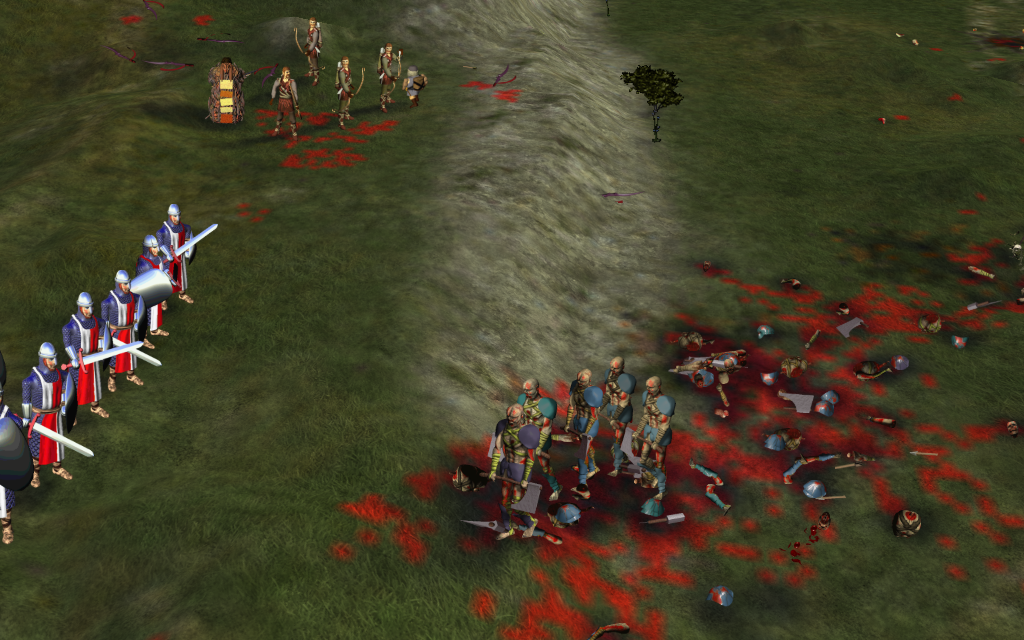How Apple’s Macs Could Become Powerful Gaming Machines

Another great game from the team that later made Halo, Myth, one of the ’90’s most successful fantasy fighting titles. Available for Mac.
Everybody tells you the Mac has never been a great gaming machine.
That’s not entirely true — some of the best first generation games hit the platform first. Bungie, the people who made Halo for Xbox, also created Pathways Into Darkness, one of the first great fantasy titles. And it was Mac only.
However, by the time this Century opened up the Mac was not much of a games platform. You can get games for it, but the most powerful titles demand state-of-the-art processors and hardware optimizations PC users often buy as separate components to build super powerful games machines.
Fit for AR
This changes a little with the MacBook Pro and its Thunderbolt 3 connection. A post on 9to5Mac points out how you can link up an external graphics processor unit to your MacBook Pro to play high end Windows gaming titles in Boot Camp.
The existence of that report underlines the big deficit that currently exists between Macs and games. Hardcore gamers use PCs. That seems to be the way things are.
Apple may want to change this.
The company’s most powerful Mac, the Mac Pro, hasn’t been updated in years and years and years. That’s a bad thing. Apple is losing some of its most loyal creative customers as a result. They want the power to do their jobs, and they are finding that you can gain more power from some of the latest high-end Windows PCs, at a better price.
That’s a problem
That’s a particular problem when you consider the company’s much-hinted-at-plans to introduce Virtual and Augmented Reality support (VR and AR).
Apple’s Tim Cook has made little secret of the importance with which the company sees these technologies, and I think meeting this challenge may help account for the appalling lack of love pro Mac users have felt in recent years.
You see, at the high end, VR and AR experiences require powerful machines.
One great example of this is the HTC Vive. Arguably the best mass market device available in its category, Vive is sold alongside a powerful HP Envy system, equipped with a Radeon RX 480 and Intel Core i5-6400 processor.
Think on that.
Now think on this: We know Apple is plotting a course to introduce support for VR/AR across its platforms. We know this because Tim Cook keeps telling us.
It’s easy to imagine this will be focused on mobile experiences, but that makes no sense — you’re still going to need creative tools to build the experiences.
Within that context I can’t believe Macs will be left out of the loop. Instead I can’t help but imagine we’ll see powerful Macs designed to be state-of-the-art VR/AR authoring systems. These could be combined with powerful pro creative applications (think Final Cut X AR), and mobile devices capable of acting as client devices, as VR glasses, for example.
In the event Apple does want to foster AR and VR product development, it must provide the developer tools and the market in which such products can be created, published, and sold. It already has such a market in iTunes and the App Stores, so it seems logical to assume this will be the route to market for these new-fangled thingummy’s.
If the ecosystem does shape up to be built like this, then it is reasonable to expect insanely great high-end Macs, new software, and significant OS and API introductions in support of its plans.
Timing
The way the company discusses these ideas it seems clear this is more than Pokemon.
The company truly seems to see these developments as deep and profound changes at a system level. This means it’s reasonable to think the company has been working to create the right environment for its VR environment for some time,
If that truly is the case, then it may be worth noting that Apple has already spent a huge amount of time and effort switching mobile device users over to 64-bit smartphones, starting in 2013. Even the current edition iPhone SE is 64-bit.
What is all that power for?
I can’t explain why Apple has left Mac users in limbo for so long, but given the effort it has applied ton accelerating mobile device development to the point it has reached now, it is possible the company always wanted to do something very dramatic with the Mac, but needed to ensure wide adoption of client devices — in this case, iPhones, before it showed its hand.
I don’t know this is happening, of course — I’m just looking at the threads of speculation and attempting to weave them together to sew a coat that fits. It’s all highly speculative, but I think there’s enough substance that we’ll see some truth within this fantasy.
Apple CEO Tim Cook’s recent statements that the company is still focused on pro Macs, has ideas for its pro software, and his admonition not to think “something we’ve done or something that we’re doing that isn’t visible yet is a signal that our priorities are elsewhere,” certainly suggests Apple has been cooking up something surprising.
Though it could just be a Magic TouchBar and a new Mac Pro.
Wait and see.





Even though many people have commented (negatively) on Apple’s neglect of the Mac, especially desktop Macs, I fully believe that not only is Apple aware that several of its Mac products have not been updated in an unusually long time… I also believe that Apple is doing this intentionally.
We can only speculate on WHY Apple is ignoring its desktop Macs.
I think that there are these possibilities:
– Apple is preparing a completely new lineup of desktop Macs to replace the current models, but the company has been holding off until Intel FINALLY produces a reliable supply of Kaby Lake desktop CPUs.
– Apple is preparing a completely new lineup of desktop Macs to replace the current models, but the company will introduce them with an entirely new line of Apple-designed ARM desktop processors, and running an ARM-native version of macOS (with third-party apps running in emulation until they are written natively). The initial ARM processors will compare well against the performance of the older Intel processors in the current Apple desktop line.
– Apple is actually backing away from Mac desktop computers, as they are in much less demand than Apple’s notebook computers. Considering that the PC business has been in decline for several years, and is expected to continue this downward trend, spending R&D money and chasing after a declining portion of a declining business is not in Apple’s best interest business-wise. Apple will discontinue all of its desktop Mac business over the coming year.
– (This one is least likely, but still a remote possibility) Apple will be introducing a totally new line of iPads and iPad accessories, to make the giant leap into “Pro” territory for real this time. The iOS operating system version for the iPad will have a complete make-over in UI and features (rather than just being a larger version of iOS for the iPhone) making it undeniably a powerful and productive replacement for computers that run desktop operating systems. This would be the long awaited transition from the PC that has been with us since 1984, to a new modern paradigm of the thin, light, and powerful mobile computer that can transform via external accessories (keyboard, trackpad, monitor, hub) into a powerful desktop computer.
Everyone compromises something and Apple has decided that Sleek and quiet are their priorities. This combined with the speed that GPU’s are still advancing and the longevity of Macs and it is no surprise that we are where we are. That said, Blizzard choosing to not create Overwatch for the Mac should have opened eyes and turned heads. I hate when people invoke what steve might have done but I would bet he would have been on the phone with Blizzard and the engineers of the desktop and laptop teams to figure out what could be done to bring the mac back into the proper range to attract Blizzard.
Also, I do believe Tim Cook understands that VR/AR don’t really work until it can be powered by phones and tablets. I’m hoping this is why the A10X chip never saw the light of day and that instead Apple will Shock and Amaze with the A11X in the next generation iPad pro line.
I hope Tim is taking this all seriously, because I believe that Apple can walk the line between sleek and quiet with enough power to get the job done.
Any Mac good enough for serious gaming will be priced so high only those with the deepest pockets will be able to afford it. Any Mac that can be used as a gaming platform will be totally closed and use some exclusive components only Apple can replace. Apple keeps wanting to screw over customers in that respect. I get sick just thinking about what Apple did to the last update of MacMinis. You buy it totally sealed and can’t upgrade it at all. That’s just a damn selfish of Apple. If you can’t afford the initial cost of the best MacMini you end up being screwed for the life of the product.
I can afford the high-end Mac but I think it’s unfair for those who can’t. Why should they be penalized for not having the initial cash? I’m sure this must hurt MacMini sales. Every month when MacMinis show up in the refurbished area, they’re immediately sold out within days. There has to be a good demand for them.
I love my 2012 quad-core i7 MacMini of which I upgraded the memory and hard drive. That was the last of the good MacMinis. It’s built like a brick and runs great. Why couldn’t Apple have kept building on that model instead of completely sealing up some dual-core i7 MacMini? It’s just stupid strategy.